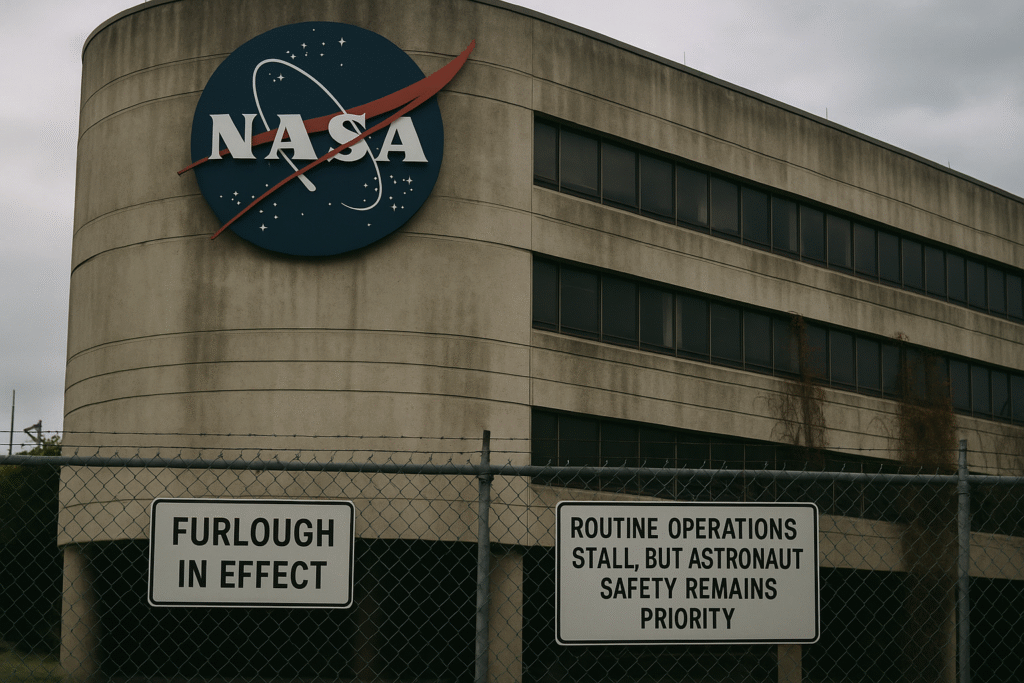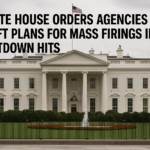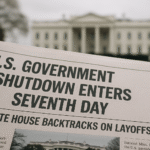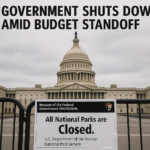By Harshit | 9 October 2025 | Houston, USA | 09:00 AM CDT
The ongoing US government shutdown has brought much of NASA’s daily operations to a halt, prompting questions about how the agency continues to safeguard its astronauts and critical space missions. Over 15,000 employees have been furloughed, leaving only a small cadre of “excepted” personnel on duty to maintain essential activities.
According to NASA’s contingency protocols, nearly all routine scientific research, mission development, and public outreach are suspended during funding lapses. The agency resumes full operations only once Congress approves a budget. As of October 1, NASA has provided no updates on its official blog or social media channels, leaving public communications largely silent.
Maintaining Essential Operations in Orbit
Despite the shutdown, critical missions involving human life or the protection of high-value space assets continue. Chief among these is the International Space Station (ISS), where American astronauts collaborate with international partners from Russia, Europe, Japan, and Canada.
NASA’s limited team in Houston remains operational around the clock, monitoring spacecraft systems, coordinating emergency responses, and ensuring astronaut safety. These employees, classified as essential, continue their work without pay until government funding is restored. Their responsibilities include tracking orbital parameters, maintaining life-support systems, and liaising with global partners to respond to potential anomalies.
Automated systems aboard the ISS also help reduce operational strain during furloughs, allowing a minimal human workforce to manage day-to-day spacecraft functionality.
Broader Impact on NASA Missions
While astronaut safety is maintained, nearly all other activities have been paused. Non-essential research projects, educational initiatives, and the development of future missions—including NASA’s Artemis Moon program and planned Mars exploration—are temporarily on hold.
Mission planning, launch preparations, and design timelines have all been delayed. For researchers relying on federal funding, the shutdown interrupts experiments and projects that cannot proceed without active NASA support. The pause also affects global collaborations, as other space agencies and contractors rely on timely coordination with NASA.
Legal and Operational Framework
Federal law prohibits NASA from spending unappropriated funds. During a shutdown, the agency can operate only activities deemed essential for life or property protection. This includes monitoring crewed spacecraft, planetary defense measures, and maintaining critical infrastructure.
All other functions, including new mission design, data analysis, and public outreach, must be suspended. Employees cannot volunteer their services during furloughs, creating backlogs that typically require weeks to resolve once funding is restored.
Lessons from Previous Shutdowns
NASA has experienced similar funding lapses in 2013, 2018, and 2019. Each resulted in:
- Furloughing the majority of staff
- Pausing research and education programs
- Delaying mission design and launch schedules
The repeated interruptions highlight the vulnerability of US space operations to political gridlock. While essential operations continue, the temporary halt in scientific activity slows progress and creates ripple effects across international collaborations, university partnerships, and private aerospace contractors.
Looking Ahead
Until Congress resolves the funding impasse, NASA’s skeleton crew ensures that astronauts remain safe and spacecraft critical systems stay operational. However, the pause in research, development, and public engagement underscores the broader consequences of a shutdown, delaying timelines for ambitious projects and slowing the agency’s scientific output.
Experts emphasize that the preservation of human life and critical hardware is the primary mission during any shutdown, but the resumption of routine operations is crucial for the long-term sustainability of US space exploration.
“The shutdown affects every level of NASA, but the safety of astronauts and spacecraft is always maintained,” said a spokesperson from NASA’s Johnson Space Center. “Our essential personnel continue to monitor and protect missions, even under challenging conditions.”







